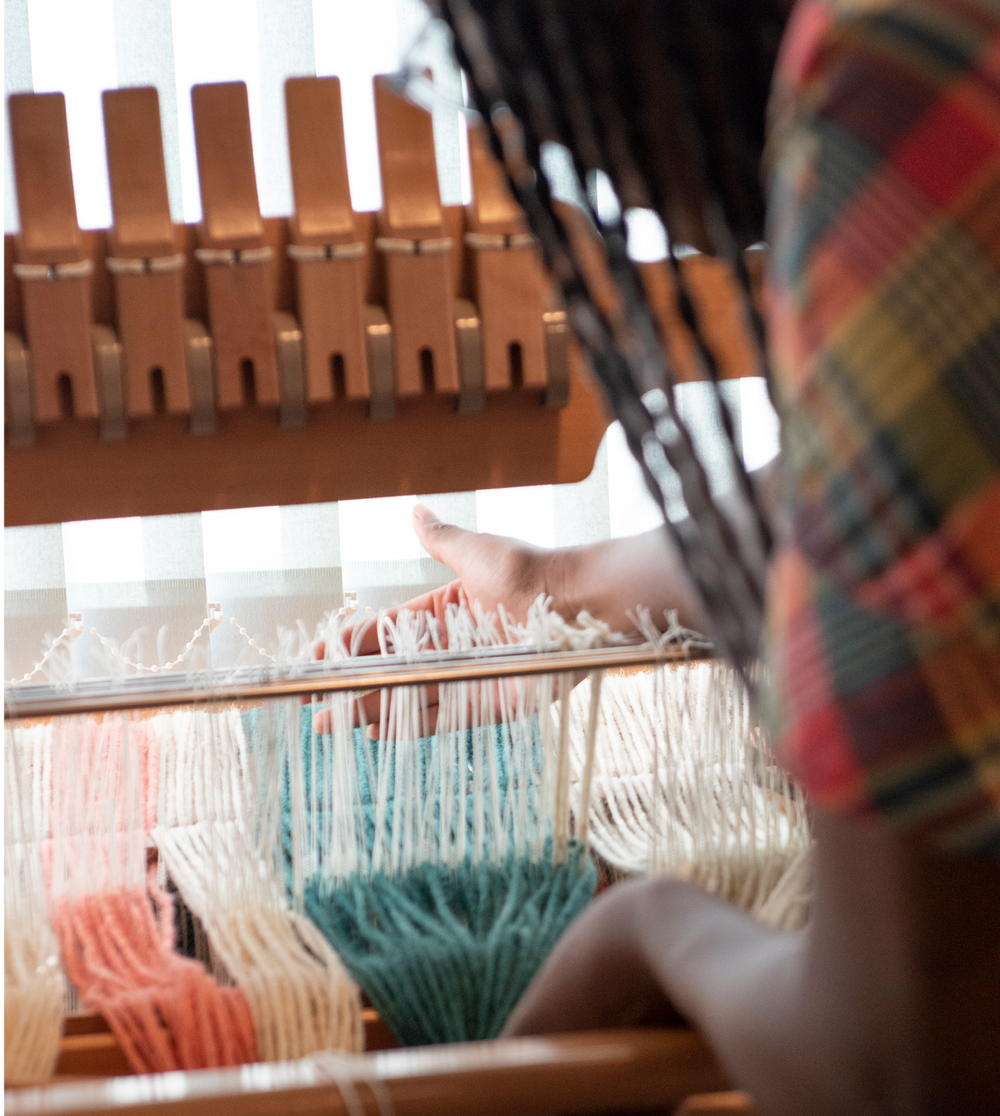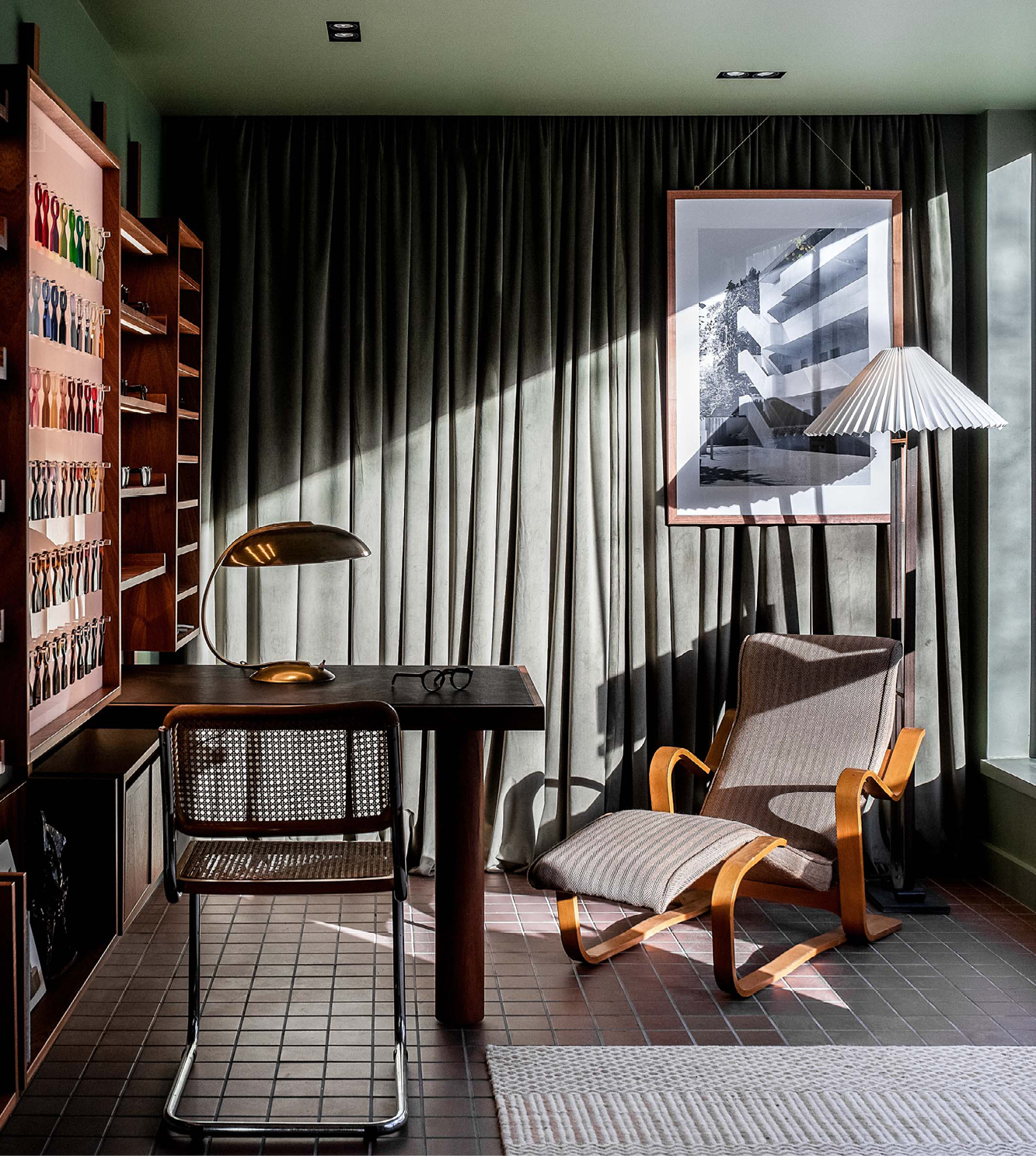Tom Broughton: From aeroplane engineer to creator of geometrical art. What connects those dots?
Michael Challenger: Well I did an engineering apprenticeship in the last five years of the 1950s, at an aircraft factory called Vickers Armstrong, which made airliners, the Vickers Valiant. It employed about 14,000 people. And because I could draw, I ended up doing exploded views of engines. There were about 20 or 30 of us doing this. You’d look at the blueprints and draw it in 3D. Nowadays computers could do that sort of thing. But it’s not that these drawings led to the geometry, it’s the other way round. That was the way my mind worked. I already knew I wanted to do fine art. That apprenticeship finished on the Friday, and I went into Goldsmiths on the Monday and they said ‘you can start tomorrow’. And that was like someone who had been starving, suddenly coming across a banquet.


TB: And was that caught up with an interest in art movements, in modernism?
MC: The big influence I eventually became aware of was surrealism. That happened later on when I was at Slade, by which time I was already doing sculpture full time - making figurative pieces. I was introduced by one of the lecturers to the work of Georgio De Chirico. There weren’t any in museums at the time, but I got the opportunity to see his works in the house of Roland Penrose, and I was amazed. These impossible spaces.
TB: How did that figurative work transition towards a fascination with geometry?
MC: Well the last sculpture I made when I was a student at the Slade was of a man swimming the front crawl. Life size and as lifelike as I could model him. Cast in fibreglass and then painted as realistically as possible. So it’s his torso and his foot emerging from the ground, with nothing in between. And your mind puts in the rest of the body. I put it out on the lawns at UCL and my professor at the time said: that’s a good sculptural joke, but when you get up to it, it doesn’t turn around and speak to you. A bit later on I realised he had a point, and that's where the geometry sort of came from. The perception of something and its absence coexisting in the sculpture.
It also came from screen printing. The first job I had when I left the Slade: I was teaching printmaking at Chesterfield School of Art, and I knew lithography and I knew etching. I'd never come across screen printing. But the minute I tried it, it did all the things that I was trying to do with the other mediums fantastically well. Those flat areas of colour. So that led to an embrace of geometry


TB: What makes geometry fascinating?
MC: What doesn't make it fascinating? My works are all basically just straight lines, but I don’t think it ever becomes monotonous. It's infinitely variable. I rather like the thought of doing an exhibition of 20 or 30 pieces that are all exactly the same. And just varying the colour combinations. There's a piano piece by Eric Satie that lasts about a minute and a half, with instructions to repeat 840 times. John Cage performed it and I think it took 18 hours. I like that idea of repetition. It’s fascinating to see how that just doesn't seem to stop making different images, and that's even before colour gets introduced.
TB: What is your approach to colour? Does it develop in tandem with the geometry?
MC: I think it's all part of the same thing. It's one thought. There's no such thing as bad colour. Only different colours. When you put colours together, they react to each other. And it just fascinates me as to how that takes place. I like to experiment, putting different colours together, sometimes tonally, you know, three sides of a cube, three shades of the same colour. But at times you can use three different colours and so on and so on. So there's no right or wrong about it. And it's extremely interesting what colours do.


TB: You play the piano, and a harpsichord you built yourself. How does your art relate to music?
MC: Pretty much in tandem. Since I was a child, I’ve loved playing the piano. I’m fascinated by what music can do. When you’re in a concert hall listening to a symphony, you’re absolutely in that moment, and I hope visual things can do that as well. With the geometric images, your brain will insist on trying to resolve the gaps, and that’s like visual music, really. You can be listening to this sound, and whether or not you like what you're hearing, you can’t help but perceive it in a certain way. And I find it is the same with geometry, that I’m just completely immersed in the image.


TB: What connects your artworks and their enigmatic titles?
MC: The titles are really part and parcel of what the work is. I was very influenced by Carl Jung and his stream of consciousness thinking, which I was introduced to when I was at the Slade. When you wake in the morning, and you're not asleep but you're not awake either. In that moment, you can write down things that come into your head. A lot of the titles come from that thought process. They form themselves autonomously. One of my prints is called Rememory. That was from my youngest daughter who at the time was just learning to speak, and she got ‘memory’ and ‘remember’ mixed up, a portmanteau. And that’s a brilliant title, but not something I could have made up myself. It just took place and attached itself to the work. There's a big screen print called Fortunately Peter Stood Still, which is something I overheard when I was in a restaurant. It’s all probably madness really.
TB: Would you say you deal in the real or the unreal?
MC: I'm hoping everything is real. I'm just amazed at the moment of time we're in. And the older I'm getting, the more amazing it becomes to me. I'm not religious or anything. I believe this is it. But nobody's ever explained it. What we're all experiencing *clicks fingers* right now - it's incredible. The first five years of my life, and what was going on above my head. I’d be walking to school with a gas mask on. My sister and I lived in an Anderson shelter in the basement of the house that was our bedroom. It’s not that you were terrified, you just didn't know any different. But these days… I’m getting deja vu in a funny sort of way. And you think: come on guys, let’s get on with something else.






